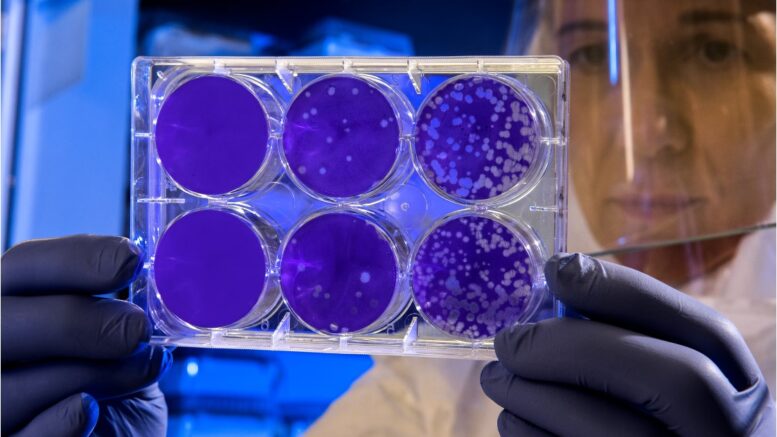Stem cell therapy or regenerative medicine has been around for decades, with the first therapy dating back to 1957. However, it has witnessed great progress in recent years, offering advanced solutions to complicated and life-threatening diseases. It also opens the next chapter in organ transplantation, using cells instead of donor organs.
According to statistics, the global stem cell therapy market is projected to reach $928.6 million by 2031. Autologous transplants are expected to have the largest market share from 2022-2031. While the cost for individual treatment with this therapy runs in the thousands, its efficacy makes the concerns less significant for patients. Moreover, there are ways to economize treatment without settling for less.
In this article, we will highlight the life-saving potential of stem cell therapy and suggest ways to make it affordable for patients.
How Stem Cell Therapy Can Save Lives
Regenerative medicine utilizes stem cells to treat diseases in human beings. With their ability to self-renew, stem cells can replace themselves and produce daughter cells with specialized functions. For example, they can produce blood cells that help with clotting or replace dysfunctional or injured tissue. These qualities make them useful for treating a variety of diseases.
Here are a few instances of this promising therapy helping save lives:
- The largest cell therapy trial for chronic heart failure caused by low ejection fraction (EF) conducted in February 2023 demonstrated the potential of targeted mesenchymal precursor cells (MPCs) therapy in treating inflammation.
- According to a March 2023 study, stem cells from cord blood were shown to drive remission for the first mixed-race, female HIV patient.
- Another 2022 study highlighted the potential of autologous hematopoietic stem cell transplants in slowing down disability for patients of active secondary progressive multiple sclerosis (MS).
- A clinical trial for patients with Parkinson’s disease showed the efficacy and safety of transplant of stem cell-derived dopamine cells.
- Transplantation of hematopoietic stem cells has the potential to treat disorders of the immune system, hematological malignancies, and solid tumors.
Ongoing stem cell therapy research and development will likely lead to much bigger and better outcomes in the medical treatment landscape. However, the cost associated with this therapy may be a significant barrier for many patients. We will explain how it can be within the reach of individuals with limited financial means.
Making Stem Cell Therapy Affordable
Exploring the life-saving potential of stem cell therapy should not be about spending a massive amount. Collaborative efforts by research organizations, providers, and government can lower its costs. At the same time, awareness is essential for patients seeking treatment within budget. Here are a few considerations in this context:
Understand the Cost Structure
Stem cell therapy costs may vary depending on specific aspects, such as the disease to be treated and the type of treatment required for a patient. Simple treatments may cost $5000, while complex ones may go beyond $25,000.
Before exploring affordability, you need to understand the cost components of the therapy. Consultation with clinics and medical professionals can help you get a detailed breakdown of expenses for making informed decisions.
Explore Clinical Trials
You can access cutting-edge therapies at reduced or no cost by participating in clinical trials. According to the Mayo Clinic clinical trials have been conducted to study the efficacy of stem cell therapy for different diseases. Investigate these options with research institutions and healthcare providers to seek treatment without breaking the bank.
Invest Time in Research
Patients considering stem cell therapy should invest time in research. It can help you explore available options, success rates, and potential risks. For example, you may be a good candidate for the therapy if seeking treatment early and getting donor stem cells from a viable source with an optimal match, as per Cleveland Clinic.
Consult medical professionals, seek second opinions, and utilize reputable sources for a comprehensive understanding of the treatment’s viability for a specific condition.
Consider Medical Tourism
Medical tourism is an excellent option for patients looking for high-quality treatments at a fraction of the cost in their home countries. Stem cell therapy in Mexico is affordable for American patients struggling with the cost of treatment in the US. Factors like research and development costs, overhead expenses, and regulatory requirements account for the difference.
According to Beyond Cellcare, patients opting for Mexico can get high-quality treatment at a low cost. While clinics in the country offer treatment for several diseases, the success stories of patients treated here add to their credibility.
Look for Grants and Financial Assistance Programs
Several organizations and foundations provide financial assistance and grants to patients seeking stem cell therapy. Research and apply for such programs to alleviate your financial burden. Medical insurance coverage may be available for some approved stem cell therapies, so be sure to research your options in this context.
Stem cell therapy shows great promise in saving lives, but financial constraints often hinder its accessibility for many patients. You can dig deep and research your options to navigate the financial aspects of treatment without compromising quality. Affordable access is a shared goal, and you may find help in more ways than you expect.
